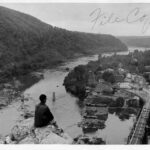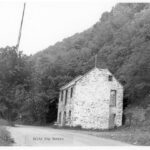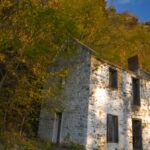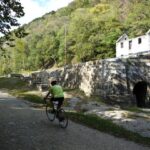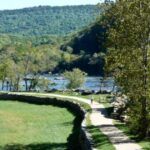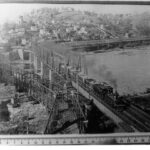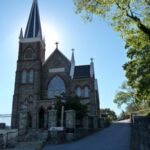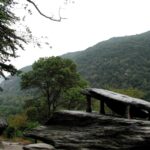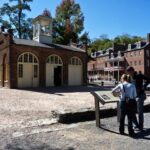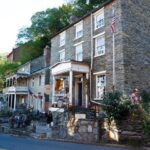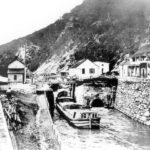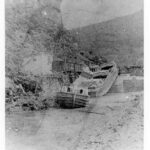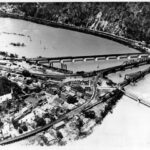Conflict and Change
By Ranger Lisa
The first time I visited Harpers Ferry, I was struck by the quaintness of the town and dramatic surrounding landscape. I soon discovered this peacefulness belies the underlying conflict and change that characterized this site for much of its history. Many pivotal events in American History define Harpers Ferry: the mass production of weapons, John Brown's Raid, the largest surrender of Federal troops during the Civil War, one of the earliest integrated schools in America, and the NAACP Niagara Movement. Every time I visit I discover something new. I know that you too will find much to experience where the C&O Canal and Harpers Ferry converge.
In 1799, the first federal armory was built at Harpers Ferry. By 1840 the United States Armory and Arsenal changed from a craft-based production to manufacture by machine. Over 600,000 muskets, rifles, and pistols were made here, making the armory a strategic target during the Civil War. The armory was abolitionist John Browns target on the night of October 16, 1859, when he and his "army of liberation" marched down the C&O Canal towpath. His goal - to start a slave rebellion. Aided by Lockkeeper John Cook at Lock 33, Brown's crew crossed the railroad bridge into Harpers Ferry and stormed the armory. Thirty-six hours later Brown's vision was crushed as he and his followers were captured in the armory fire engine house when US Army Marines led by Col. Robert E. Lee stormed the building. Brown's subsequent trial and execution focused the nation's attention on the moral issue of slavery and headed the country toward civil war. During the Civil War, Union and Confederate troops moved through Harpers Ferry frequently with the town changing hands eight times between 1861 and 1865.
Following the Civil War, New England Freewill Baptist missionaries acquired several vacant buildings in town. These buildings became Storer College, an integrated school designed to educate former slaves but open to students of all races and genders. To combat the injustices of legal segregation the second conference of the Niagara Movement (the forerunner of the NAACP) was held on the campus in 1906.
Today, a visit to Harpers Ferry provides many opportunities to explore three National Park sites; the Appalachian Trail, Harpers Ferry National Historical Park, and C&O Canal National Historical Park. Harpers Ferry's has many eateries, from fine dining to a quick snack. There are many opportunities to hike in the Harpers Ferry area. My two favorites are the hike along the Appalachian Trail up through town to the Jefferson Rock to take in the magnificent view of the convergence of the Potomac and Shenandoah Rivers, and the hike up to Maryland Heights which provides amazing views of the rivers and town. For nature lovers, there are over 170 bird species and more than 30 mammals in the Harpers Ferry area to discover. Whatever your passion - history, hiking, pleasure, or nature - you're sure to find it here.
- Photograph looking towards lower town Harpers Ferry National Park taken by National Park Service Photographer Abbie Rowe. Credit: National Park Service
- The view from Maryland Heights has barely changed over the years. Credit: National Park Service
- The building shown was built by James Elgin in 1840-1841 and was used as a store and a residence. The Salty Dog Tavern was a wooden structure attached to the upstream side of this ruin and is no longer standing. Credit: National Park Service
- Commonly mistaken for a lockhouse or the Salty Dog Tavern this historic structure was once a home and store along the canal. Credit: David P. McMasters
- The hike up Maryland Heights is well worth the view! Credit: David P. McMasters
- As the sun sets, head across the bridge into Harpers Ferry for dinner. Credit: David P. McMasters
- Early morning fog and the rising sun enhance the natural beauty of this confluence of two rivers in a valley. Credit: David P. McMasters
- Trains are a frequent sight and sound as they travel under Maryland Heights toward Washington, DC. Credit: David P. McMasters
- A biker treks upstream past Lock 33. Credit: C&O Canal Trust
- This stretch of canal affords visitors splendid views of the river. Credit: C&O Canal Trust
- Rafters can still be seen on the river as the chill of fall sets in. Credit: C&O Canal Trust
- This puppy looks longingly across the river where she knows a doggie ice cream awaits at a local restaurant. Credit: C&O Canal Trust
- A peaceful scene of the canal upstream from Lock 33. Credit: National Park Service
- The railroad bridges at Harpers Ferry have gone through many changes over the years. This 1880s photograph depicts the two bridges used after the Civil War. Credit: National Park Service
- The ruins of St. Johns Episcopal Church which was once used as a hospital and barracks during the Civil War, still stand today. Credit: C&O Canal Trust
- St. Peters Roman Catholic Church was built in the early 1830s to accommodate the influx of Irish laborers working on the canal construction. Credit: C&O Canal Trust
- Thomas Jefferson boasted the view from this rock was well worth a trip across the Atlantic. Credit: C&O Canal Trust
- The armory at the base of town is the site of the John Brown raid in 1859. Credit: C&O Canal Trust
- Historic buildings are home to museums, restaurants and shops varying from pottery to hiking gear. Credit: C&O Canal Trust
- The Appalachian Trail follows the Canal from Weverton and then crosses the river and continues through town. Credit: C&O Canal Trust
- The date of this photograph is unknown but it illustrates the busy atmosphere surrounding Lock 33 at Harpers Ferry. Credit: National Park Service
- This illustration is of the building near Lock 33. Locally the building was known as the Salty Dog Saloon. The structure no longer stands but a stone house that had been attached to it still looks over the canal. Credit: National Park Service
- The damage is visible to the Lock 33 area after the 1889 flood which would send the C & O Canal Company into receivership with the B & O Railroad. Credit: National Park Service
- The covered bridge shown in the 1859 photograph was destroyed June 14, 1861 by Confederates retreating from their position in Harpers Ferry Credit: National Park Service
- After the 1924 flood, the canal at Harpers Ferry was left dry. This photograph was taken after the National Park Service cleared the brush and trees that had taken hold in the lock and canal prism. Credit: National Park Service
- 1932 photograph of Harpers Ferry In 1936, two of the oldest bridges would be destroyed by the flood that would cause the sale by the B&O Railroad of the Canal to the Federal Government. Credit: National Park Service
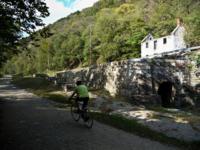
Lock 33
Milepost 60.7
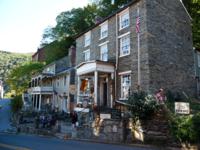
Town of Harpers Ferry
Milepost 60.7
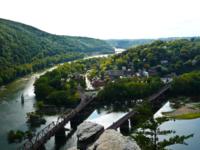
Maryland Heights Trail
Milepost 61
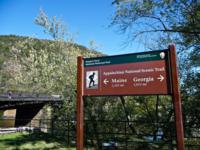
Appalachian Trail
Milepost 58
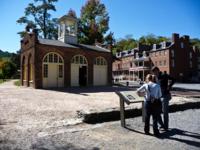
Harpers Ferry National Historical Park
Milepost 60.7
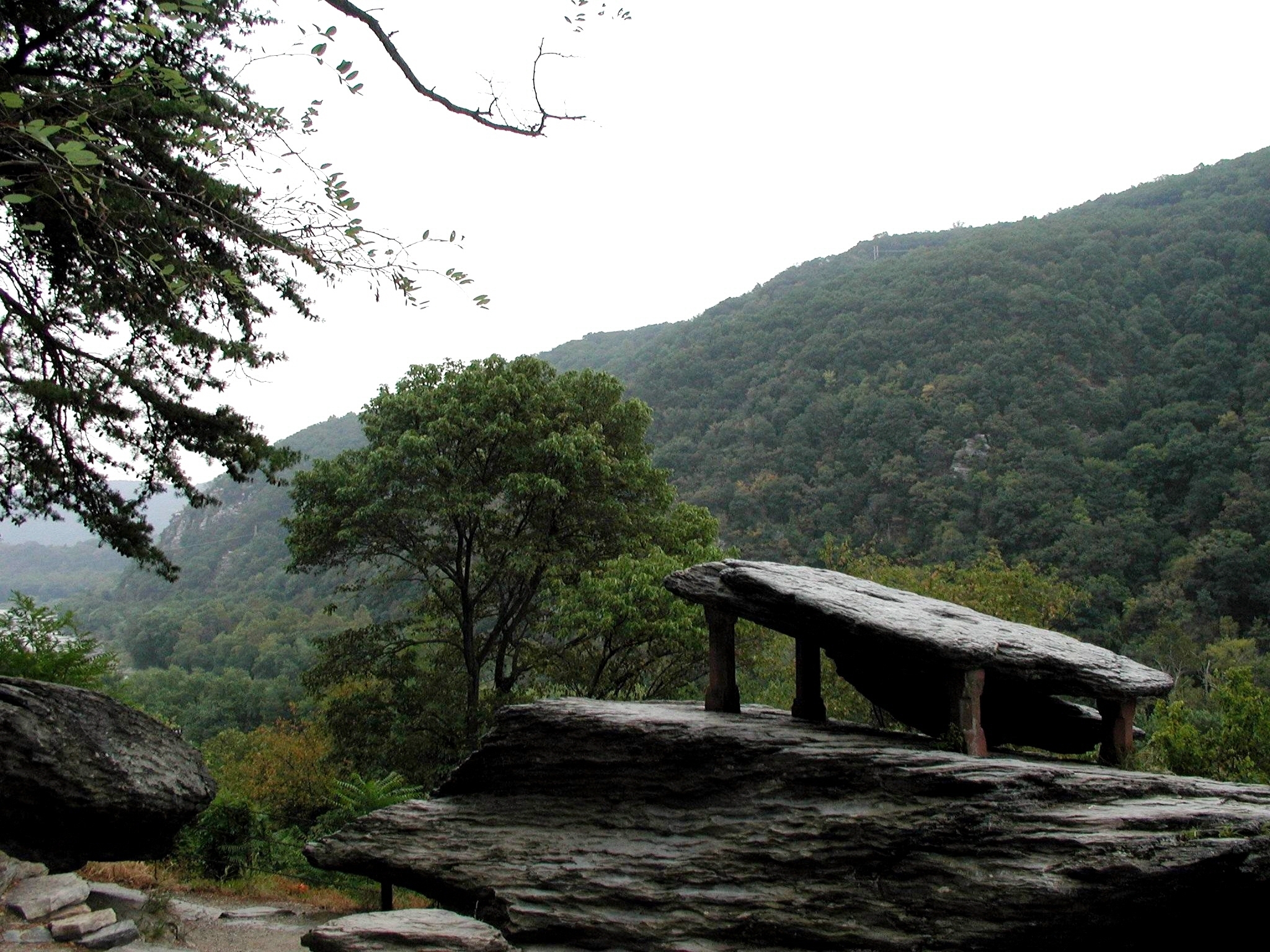
Jefferson Rock
Milepost


